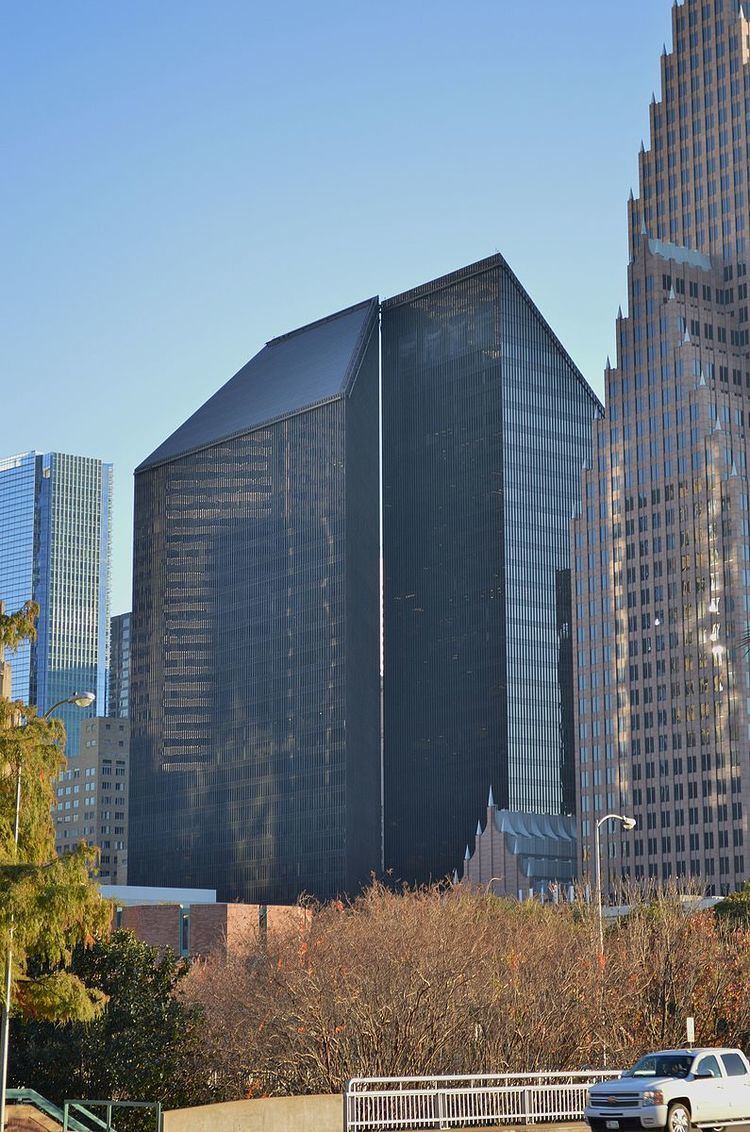Status Complete Phone +1 713-224-5930 Floor count 36 | Roof 523 ft (159 m) Completed 1975 | |
 | ||
Address 711 Louisiana St, Houston, TX 77002, USA Hours Closed today SundayClosedMonday7AM–6PMTuesday7AM–6PMWednesday7AM–6PMThursday7AM–6PMFriday(Cesar Chavez Day)7AM–6PMHours might differSaturdayClosedSuggest an edit | ||
Customer spotlight pennzoil place
Pennzoil Place is a set of two 36-story towers in downtown Houston, Texas, United States. Designed by Philip Johnson and John Burgee and built in 1975, Pennzoil Place is Houston's most award-winning skyscraper and is widely known for its innovative design.
Contents
Pennzoil place english
History
In May 1976 Deutsche Bank and other partners in a West German investment group bought a 90 percent interest in the Pennzoil Place building for $100 million.
The Redstone Cos., the owners of The Houstonian Hotel, opened one of the first two "Houstonian Lite" fitness club locations in Pennzoil Place. The club resides in Suite 200.
As of 2002 Arthur Andersen was vacating about 300,000 square feet (28,000 m2) of space in Pennzoil Place.
Development and style
Pennzoil Place, developed and managed by Gerald D. Hines Interests, consists of two 495 ft (151 m) trapezoidal towers placed ten feet apart and sheathed in dark bronze glass and aluminum. The buildings are mirror images of each other. The entire street-level plaza joining the two structures is enclosed in a 115-foot (35 m) glass pyramid-shaped atrium. Deliberately designed as an optical illusion, Pennzoil Place's appearance will vary depending on the different locations from where it is viewed. Pennzoil Place is considered significant in architectural circles for breaking the modernist glass box design made popular by followers of Ludwig Mies van der Rohe and for introducing the era of postmodernism. The buildings combined contain 1,400,000 square feet (130,000 m2) of leasable space.
Architect Philip Johnson was awarded the 1978 AIA Gold Medal and became the first laureate of the Pritzker Prize in Architecture in 1979 for his work on Pennzoil Place. Pennzoil Place was named "Building of the Decade" in 1975 by The New York Times architecture critic Ada Louise Huxtable because of the dramatic silhouette it added to the Houston skyline.
